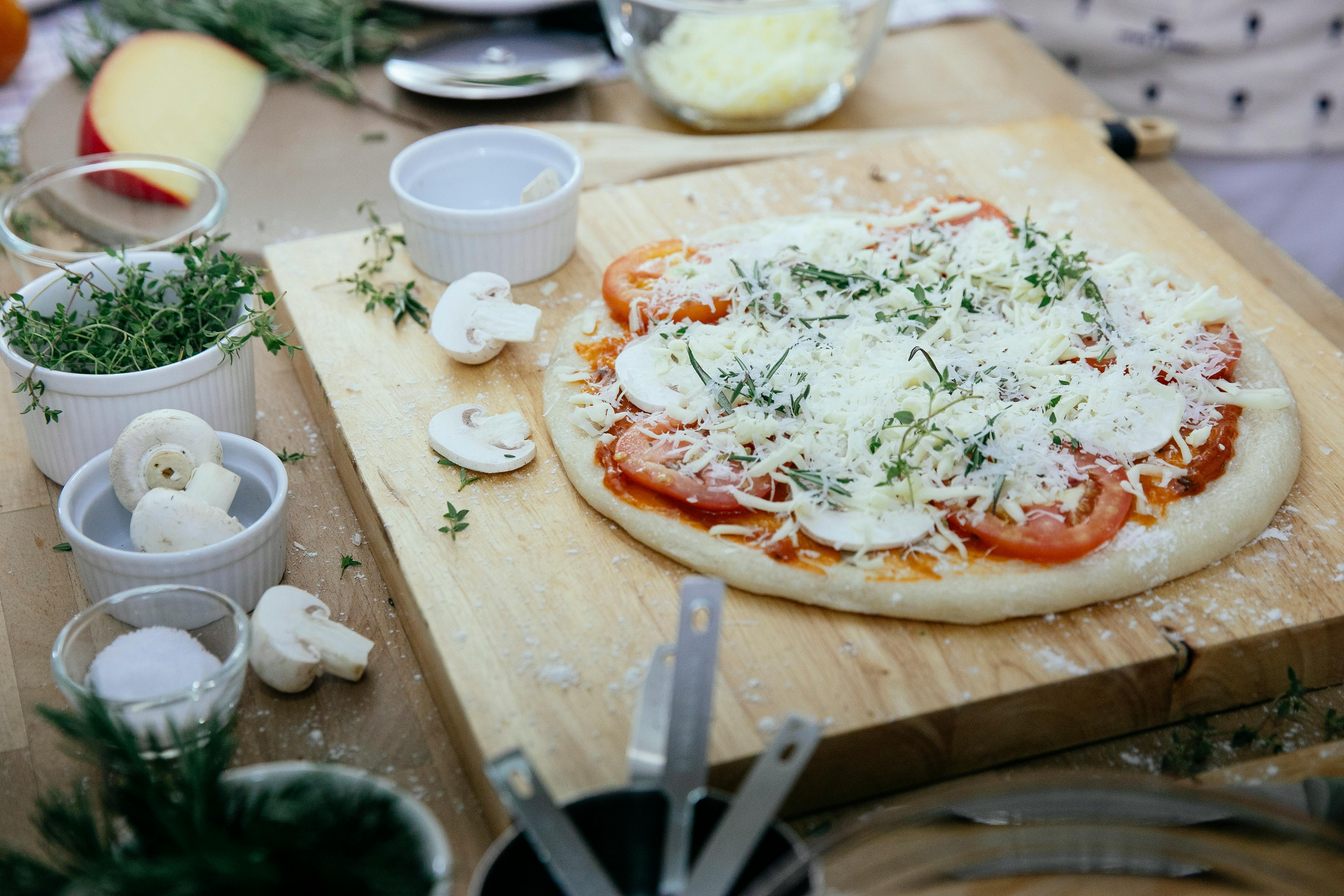2) Next, cut the vegetables into flat, longitudinal slices 4 mm thick. This is usually made easier by laying the vegetable on one of the cut ends and trimming the length.
3) Lay the slices flat on the cutting surface, either individually or in a stack for faster cutting.
4) Then use a rock cut or slicer to cut them into 4mm wide strips. Go slowly at first to make sure you’re cutting each one the same width. Website design By BotEap.comBrunoise Website design By BotEap.comA brunoise is a very thin cut into cubes. It results in small 5mm cubes on each side. Brunoise cuts are often used in sauces because the small pieces cook well and release a lot of flavor quickly. Alternatively, a brunoise can also be sprinkled on a plate as a pretty colorful garnish. Website design By BotEap.comTo prepare a brunoise, follow these steps: Website design By BotEap.com1) First cut the vegetables into julienne strips.
2) Then take the julienne and cut it into small cubes, taking care that they remain in very small cubes. Website design By BotEap.complanter Website design By BotEap.comThese are sticks or sticks cut from the vegetable of choice. Window boxes are usually shorter than julienne, but much thicker. There is some debate about the exact size a planter box should be, but they generally range between 2cm and 4cm long. They are anywhere from 4mm by 4mm thick to 10mm by 10mm thick. In its smallest form, the planter looks like a short julienne. In their largest form, they resemble the vegetables used in a vegetable and sauce dish. Vegetables cut this way can be used to add texture to a soup or stir fry. They can also be prepared together as a vegetable side dish. Website design By BotEap.comTo make these cuts, follow the julienne instructions, with the following settings: Website design By BotEap.com1) Cut the vegetable into the length you need.
2) Then cut the vegetables into longitudinal slices of the desired thickness. It is easier if you cut the length while placing the vegetables on one end.
3) Place slices long side down on your cutting surface.
4) Chop or slice the vegetables in widths equal to the thickness. Website design By BotEap.comFruit salad Website design By BotEap.comThese are larger, thicker cubes. Just as brunoise is based on julienne, Macedoine is based on planter. Fruit salad cuts are usually 1cm cubes used in soups, sauces and anywhere you want a coarser texture for the vegetable component. Website design By BotEap.comTo cut fruit salad, first prepare your Jardiniere vegetables. Then, lay out the stick or sticks and cut them into cubes (a tap tap or rock tap work well). Work carefully to make nice cubes that are the same size on each side. Website design By BotEap.compeasant Website design By BotEap.comAnother cut based on Jardiniere, Paysanne is a wide, slim cut. It differs from Macedonia in that it is not a cube, but a thin slice. Use when a thicker texture is desired from small pieces of vegetables that cook quickly and release lots of flavor. A Paysanne often used in Mirepoix, sauteed vegetables used as a base for sauces, soups, broths, and anywhere else vegetables are needed for texture and flavor. Website design By BotEap.comLike Macedoine, Paysanne needs Jardiniere cut vegetables first. Then, using a rock chop or tap chop, cut the sticks into thin slices, 1mm to 5mm thick. Website design By BotEap.comThese are some of the basic cuts that are used in the kitchen, but it is not a complete list. There are a variety of more complex cuts, many of them similar to the preparations listed here with slight variations. More advanced techniques will be published soon.
